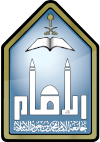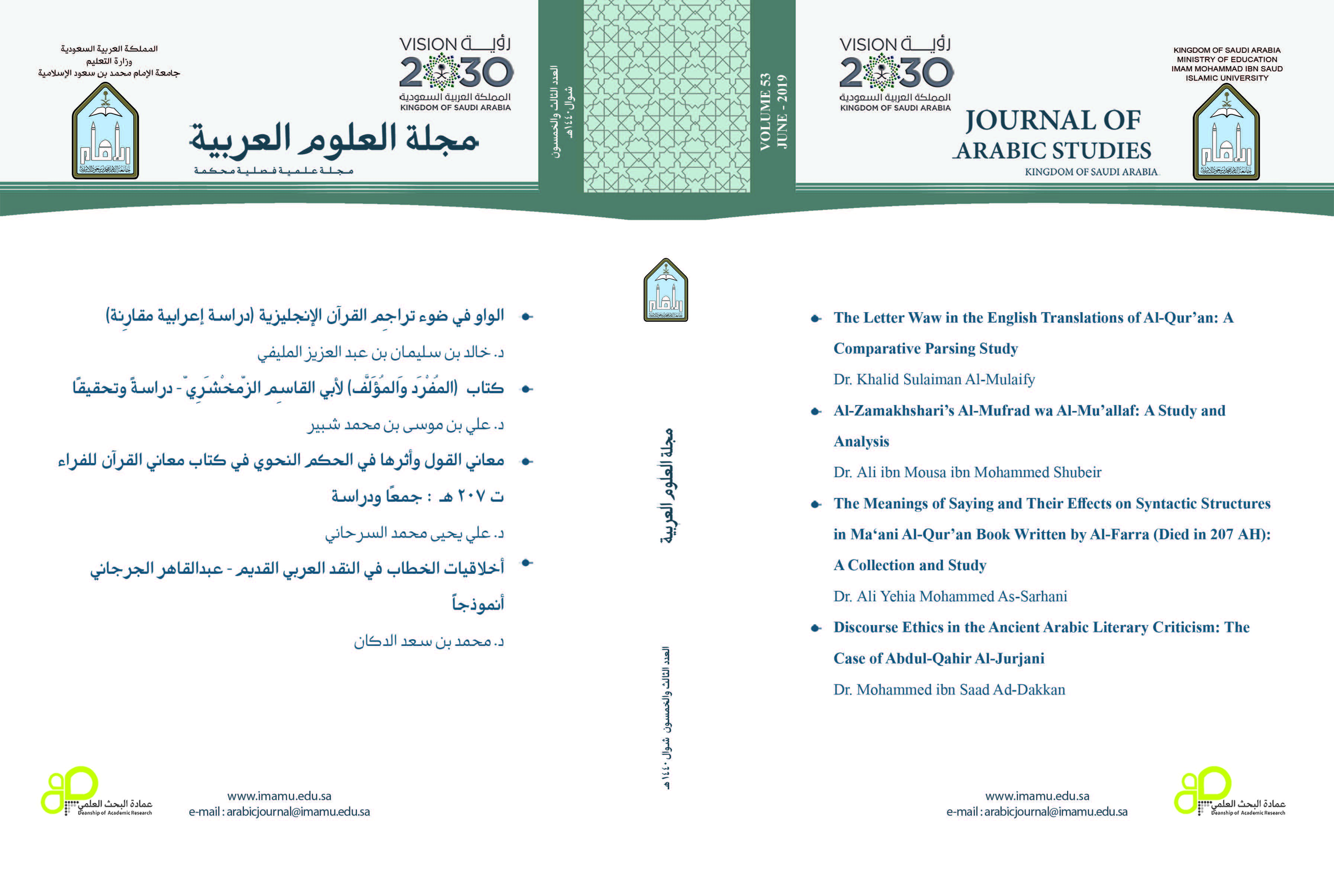The Letter Waw in the English Translations of Al-Qur’an: A Comparative Parsing Study
Keywords:
: Qur’anic translation; syntactic parsing; conjunction translation; syntaxAbstract
This research investigated the Arabic letter Waw in the English translations of the Holy Qur’an. The research depended on the syntactic parsing (i‘rab) which is one of the tools of understanding the Qur’anic text because it is a method for analyzing discourse and explaining its elements, and a basic stage in text translation. The research aims at investigating the following three issues: a) explaining the relationship between syntax in general and parsing and translation in particular; b) exploring how the translators are aware of what grammarians mentioned about the semantics and uses of the Waw letter, which interact with the context of the text; and c) identifying the methods used by the translators in converting the functions of the Waw letter. The research paper includes 3 parts titled: the Waw letter: absolute generalization and order indication, the meanings of the Waw letter in light of its multiple syntactic parsing aspects, and types of errors or inaccuracy in translating the Waw letter. The results of the research include: a) preferences in translating the Waw letter where there is more than one semantic possibility basically stems from its most preferred syntactic parsing in the Qur’anic text; b) for translators, the most problematic semantic types of the Waw letter are the recommencing waw (al-waw al-isti’nafiyyah) and the additional waw (al-waw az-za’edah); and c) a translation strategy causes making mistakes in Qur’anic translation is translators’ main dependence on interpreting the meaning of the text without giving attention to its syntactic parsing.




